
By doing three things right, GQ’s China WeChat account has undergone a successful social media transformation.
On March 1, GQ magazine China’s official WeChat account GQ Lab published the article “That night, he hurt him”. It was a series of comic strips in a black-humor cynical tone. It turned out to be a huge success: the article received more than 10,000 likes and created high social exposure for MINI, the advertiser.
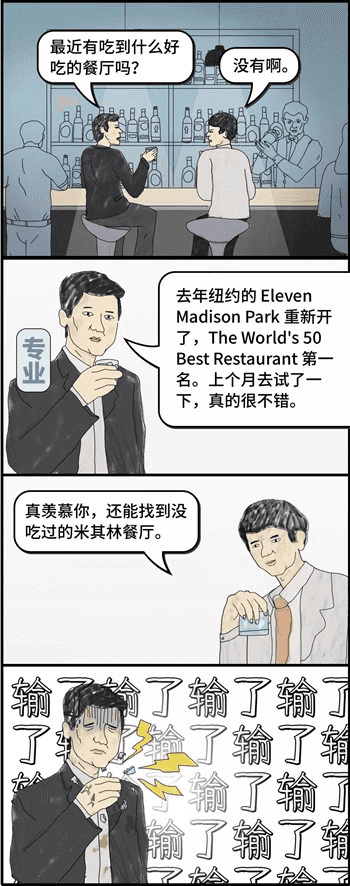
Over the past year, the WeChat account of GQ has successfully transformed itself from a social outlet of a traditional print media to a hot and influential social KOL account by its own merit, with impressive performances for its editorial and advertorial contents. Based on the comments the account had approved to be shown, netizens praised their advertorial as creative and attractive, and as one netizen replied “OMG, I finally figured out it was an advertisement until I finished reading it!”
In the era of information overload, many people’ s attention can last only 7 seconds, so a serious magazine has to strike the balance between being funny and offering solid content. GQ lab has become a good example for the industry.
GQ performance surges
Kantar Media CIC analyzed the 1,140 articles GQ had published through its official WeChat account from January 1, 2017 and April 8, 2018. The data showed that follower’s engagement was continuously increasing over the past year, especially since 2018.
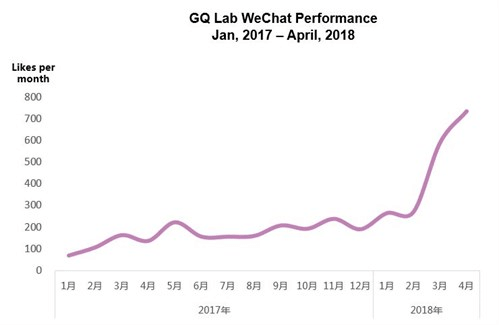
* Average likes per month = total likes received through this month/total number of articles published in this month; excluding likes for comments.
Between January 1, 2017 and April 8, 2018, the monthly compound growth rate of likes on GQ WeChat account was 16%. In March 2018, the number of likes it received was 260% higher than a year ago.
GQ also has managed to generate 100,000+ reads (note 1) for articles more frequently. In 2017, GQ was able to publish an article with 100,000+ reads every 8–9 days. But entering 2018, the performance has been largely improved to one 100,000+ article every 4-5 days.
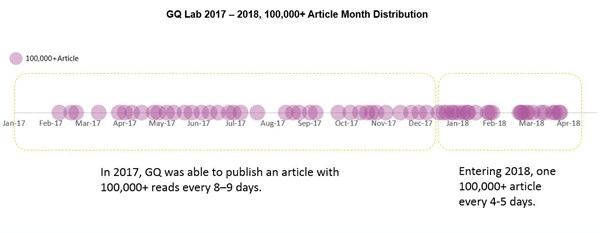
On the one hand, GQ has arranged its article publishing time very carefully to drive better engagement. It usually pushes during morning commuting time (9am-10am) and lunch break (12pm-1pm) during weekdays. To respect its users’ preference of getting up later during weekends, GQ changes its pushing time to mostly 10 am – 12 pm during weekends.
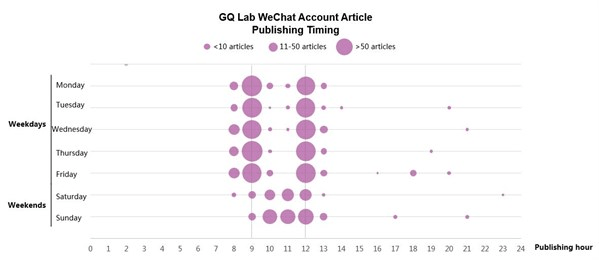
On the other hand, GQ believes “less is more.”
While other media-type WeChat accounts are keen to publish as many WeChat articles in one push as a full magazine can carry, GQ has cut down its article quantity but stresses on content quality to drive readers’ attention as well as engagement energy to fewer but better-curated articles.
GQ focused mostly on medium-length articles, which took about 10 minutes to read. The most popular articles, according to engagement level, are a mix of funny long comic strips and long insightful exclusive interviews or reports.
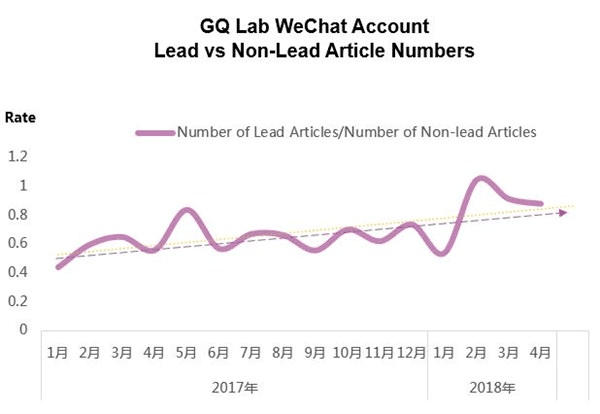
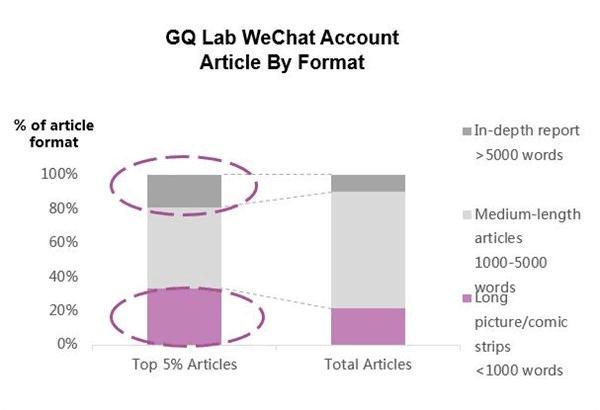
Article content analysis shows that the content profile of GQ is “a yuppie with a sense of humor & rich contents” rather than “just another fashion media chasing hot topics”.
GQ’s most popular articles were discussions of social phenomenon and challenges in everyday life, often in the form of sarcastic comic strips. On the surface, GQ was cynical, critical, and more likely negative. But readers can feel it has got a good purpose underneath these “shells”, like a yuppie with good taste and a good heart, though with a wild appearance.
Keyword Cloud for Top 5% Articles in Engagement

Kantar Media CIC Viewpoint
What has WeChat GQ lab done right in its transformation?
1. Less is more
When attention is getting increasingly scarce, everyone is a goldfish (with only 7 seconds of memory). Brands need to seize the tiniest window of opportunity to capture their interest with the best possible quality content.
2. Choose publish timing when the targeted audience is socially active
Open, read and engagement are more likely to happen when users are available and ready to be “disturbed”.
3. Spice up dry content with humor or sarcasm
Brands may find it difficult to produce “in-depth” contents for promotional purposes, however, comic-strips and sarcasm style could equally powerful tool to impress audiences. The more open-minded brands are, the readier they are to embrace Internet linguistics, the more popular they will be on social media.
This article was originally published on Kantar.com